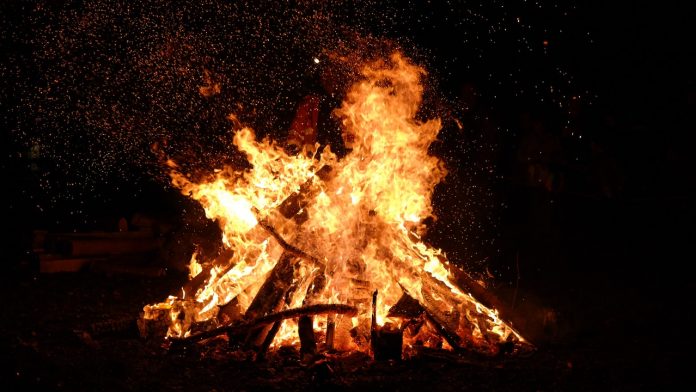
This article will help you understand how outdoor fire pits can affect the environment.
Outdoor fire pits are a great way to get a little closer to nature and have fun with friends and family, but they do have some negatives. They can be bad for the environment if not put in the right place. One problem is that if they are not carefully managed, they could easily cause wildfires which will burn down forests and damage wildlife habitat.
No matter where you live or what kind of climate you have, there are a few things that you should keep in mind when it comes to outdoor firepits: placement, size, and how often it’s used.
Outdoor fire pits are polluting because they produce smoke and other harmful products that contribute to climate change. Also for people with asthma or respiratory problems, the smoke and smog can be especially dangerous.
How many tons of co2 were produced by backyard fire pits in 2021?
 The average backyard fire pit produces around 4 tons of co2 per year. This is from the natural gas used to create heat and light.
The average backyard fire pit produces around 4 tons of co2 per year. This is from the natural gas used to create heat and light.
What are the benefits of outdoor fire pits?
The benefits of outdoor fire pits are that they are perfect for social gatherings. They are easy to set up and maintain, which is great for the host who doesn’t want to worry about tending to a fire. The ambiance they create is also great for making memories with friends and family.
How does the smoke from an outdoor fire pit impact the environment?
 The smoke from an outdoor fire pit impacts the environment in many different ways. It has an effect on air quality, plant life, animals, and humans.
The smoke from an outdoor fire pit impacts the environment in many different ways. It has an effect on air quality, plant life, animals, and humans.
Air quality is reduced when the smoke mixes with the air and becomes trapped. Plants are negatively impacted because they need clean air to grow. Animals are also impacted because when they breathe in this polluted air, it can make them sick or even kill them if their lungs are not strong enough to handle it. Humans are negatively impacted when they breathe in this polluted smoke as well; it can make them cough which can lead to an asthma attack or other respiratory problems like COPD (chronic obstructive pulmonary disease).
What are some alternative options to outdoor fire pits?
 Outdoor fire pits are a great way to enjoy the outdoors during the summer months. However, there are some other options that you can explore to get the same coziness during colder months.
Outdoor fire pits are a great way to enjoy the outdoors during the summer months. However, there are some other options that you can explore to get the same coziness during colder months.
Gas logs are one option that you can explore for an indoor fireplace. They give off a similar effect of comfort and warmth as outdoor fire pits. You should also consider getting a propane outdoor fireplace if you want to use it outside too.
Wood burning stoves are another alternative option to outdoor fire pits for wintertime. They have the same cozy feel of an outdoor fire pit without any smoke or smell!
Is wood burning smoke bad for health?
Wood smoke is the main source of air pollution in the winter. It might seem like you’re breathing fresh air but the reality is that the air you’re inhaling contains lots of toxic particles such as wood smoke, sulfur dioxide and nitrogen dioxide.
The effects of wood smoke on our health are not fully understood yet. One study has shown that it can cause or exacerbate asthma, while another one has found a link between exposure to wood smoke and cardiovascular disease and respiratory illness.


There are some very good points made in the article. Of course much is common sense if one takes the time to think about it. I find the comments regarding animals especially poignant since for so many people they are out of mind. Often as still air causes smoke to linger small particulate density per air volume increases significantly. Humans can go inside to escape ( of course houses are not generally air tight and we don’t want them to be). But where does nesting wildlife go. Sadly they just have to endure.
There is no question that wood smoke has an impact on the cardiovascular system. It produces inflammation just like tobacco which is known to stimulate atherlosclerosis. This is not to mention the creation of COPD, which has been known for a long time based of studies of indigenous peoples who use wood in poorly ventilated indoor heating and cooking areas.
Of course the general contribution to air pollution both in particulate and CO2. Both contribute to global warming through different mechanisms. One little fire no but multiply that times thousands and thousands in a dense population area and the impact is significant.
It is also interesting to think that fire pits were rare twenty years ago. It goes to show how trends sweep through society without a thought for the consequences.